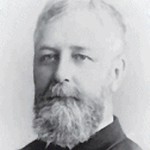 Workers’ compensation began in Germany in 1884. In the early 20th century, both Canada and the U.S. began to experiment with compensation plans. The first attempts in North America were mostly to improve a worker’s legal position when suing an employer. Ontario government sent Sir William Meredith to Europe to undertake a review of the various kinds of workers’ compensation plans in use.
Workers’ compensation began in Germany in 1884. In the early 20th century, both Canada and the U.S. began to experiment with compensation plans. The first attempts in North America were mostly to improve a worker’s legal position when suing an employer. Ontario government sent Sir William Meredith to Europe to undertake a review of the various kinds of workers’ compensation plans in use.
1914 – Ontario adopts Meredith’s recommendations. Other provinces eventually follow Ontario’s lead. New Brunswick brings in its first Workmen’s Compensation Act in 1918. It is important to recognize and remember that workers’ compensation law is, and is intended to be, a separate and distinct area of law. Applying principles from other areas of law, such as tort law or insurance law, may not give the correct answer.
All workers’ compensation legislation in Canada traces its roots back to Meredith. Meredith founded his recommendations on five key principles. Many of the key principles are interrelated and rely on each other to create a workable and cohesive compensation package.
The Meredith Principles
These five principles are the foundation for what is known as the ‘historic compromise’ between workers and employers.
1. No-fault compensation benefits
2. Security of benefits
3. Collective liability
4. Independent administration
5. Exclusive jurisdiction
1. No-fault compensation benefits
- Fault does not determine coverage.
- Workers get 100% coverage even if they are 100% at fault.
- Employers get 100% immunity even if they are 100% at fault.
- No-fault coverage eliminates workers having to sue their employers.
- Suing the employer had great risks and little chance of success because of defences available to the employer:
- Voluntary assumption of risk
- Common employment
- Contributory negligence
- None of these defences has application in compensation law today, though they can still apply in other areas of tort law.
2. Security of Benefits
- Security of benefits gives certainty to workers.
- A specific fund is set up (known as the Accident Fund) to pay benefits.
- Workers are compensated at a rate set in legislation.
- Benefits are payable regardless of fault – worker gets 100% of benefits even if at fault in the accident.
3. Collective Liability
- Compensation is a program of mutual insurance.
- Costs of the system are borne by employers and passed on to consumers as a value added to the product.
- Collective liability protects workers and their families in case an employer goes bankrupt.
- Employers protected from costs of serious and costly accidents.
4. Independent administration
- Workers’ compensation is administered by an independent agency not under the direct influence of government or employers.
- An important element of independent administration is exclusive jurisdiction. The independent agency has expertise that cannot be overturned without reason.
5. Exclusive jurisdiction
- All workers’ compensation legislation in Canada creates a statutory body with the exclusive jurisdiction to make decisions in compensation matters.
- The independent agency has expertise that cannot be overturned without reason.


 Workers’ compensation began in Germany in 1884. In the early 20th century, both Canada and the U.S. began to experiment with compensation plans. The first attempts in North America were mostly to improve a worker’s legal position when suing an employer. Ontario government sent Sir William Meredith to Europe to undertake a review of the various kinds of workers’ compensation plans in use.
Workers’ compensation began in Germany in 1884. In the early 20th century, both Canada and the U.S. began to experiment with compensation plans. The first attempts in North America were mostly to improve a worker’s legal position when suing an employer. Ontario government sent Sir William Meredith to Europe to undertake a review of the various kinds of workers’ compensation plans in use.